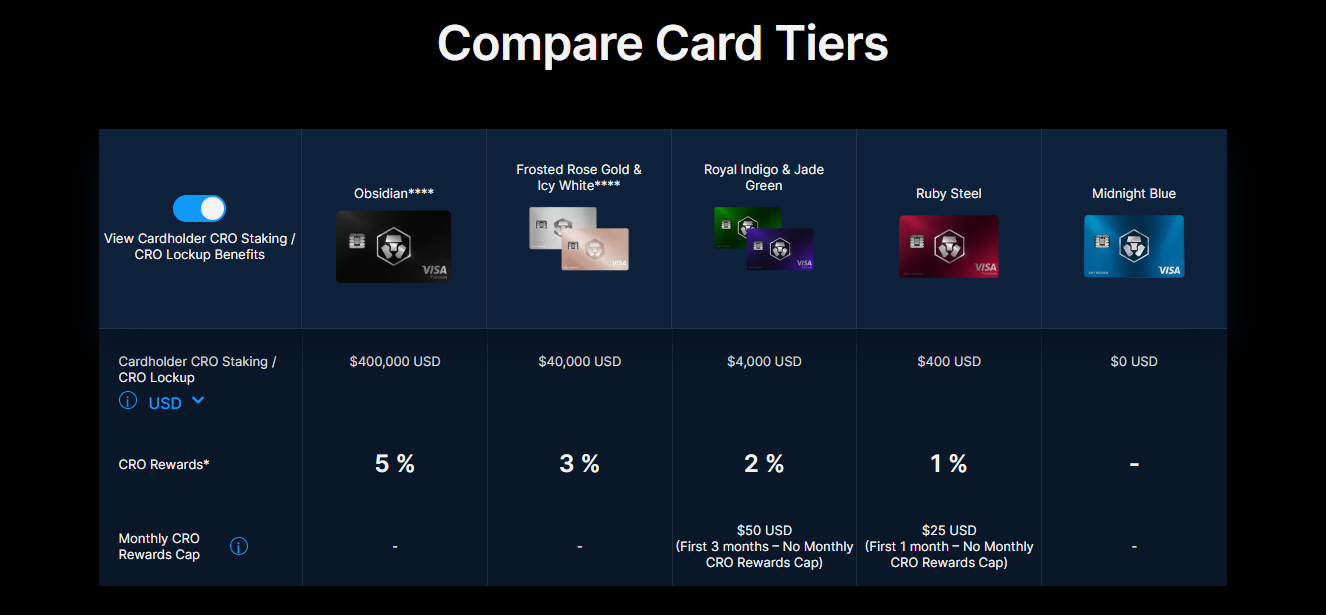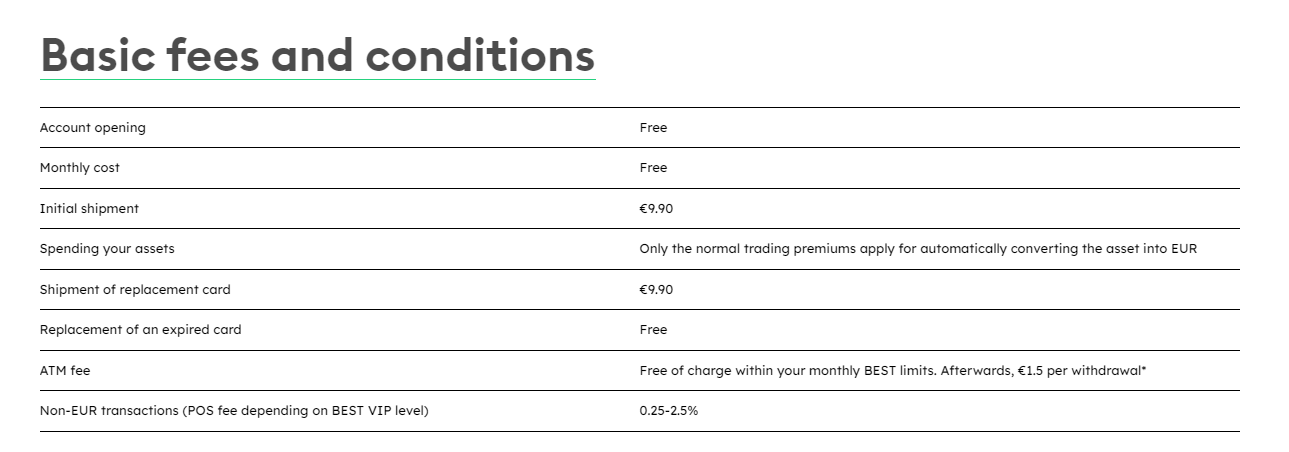In the past few years, cryptocurrencies have gradually evolved from a niche investment tool to an important part of the global financial system. With the continuous development of blockchain technology and the increasing popularity of cryptocurrencies, 2024 has ushered in a new financial innovation - crypto credit cards. These credit cards not only break the limitations of traditional credit cards but also provide unprecedented convenience and security for users by combining decentralized finance (DeFi) and blockchain technology.
The emergence of crypto credit cards provides users with a seamless way to integrate cryptocurrency into their daily consumption. Whether it's shopping, traveling, or online payments, crypto credit cards allow cardholders to use their crypto assets anywhere credit cards are accepted. This innovation not only enhances the practical application scenarios of cryptocurrencies but also brings more liquidity and transparency to the global financial market.
This article will delve into the development prospects of crypto cards from the perspective of the global consumption index.
Overview of Global Economic Growth

In 2024, global economic growth is expected to reach 3.5%, higher than the 3.3% in 2023. Despite this relatively moderate growth rate, it still indicates signs of global economic recovery after facing a series of challenges. The driving force behind this growth is the developing economies and emerging markets, which continue to propel steady global economic growth through infrastructure construction, technological innovation, and industrialization.
The North American economy is expected to continue its recovery in 2024, benefiting from strong consumer spending and investment growth, especially in the technology and manufacturing sectors. Additionally, stable development in the energy sector and increased exports also provide robust support for the North American economy.
Despite challenges such as rising energy prices and supply chain constraints, Europe still shows signs of economic recovery. EU member states are driving economic growth through fiscal stimulus policies and reform measures, particularly investments in green energy and digital transformation, which have become new engines for economic growth.
Asia continues to lead global economic growth, with China and India playing key roles as major economies. China is driving sustained economic growth through a high-quality development strategy and technological innovation, while India is enhancing economic vitality through reform measures and infrastructure investments. Furthermore, the economic growth of Southeast Asian countries is also noteworthy, as these nations are promoting economic integration through regional cooperation and trade agreements.
The Latin American economy is expected to experience moderate recovery in 2024, benefiting from the rebound in international commodity prices and regional integration. Brazil and Mexico, as major economies, are enhancing their growth potential through reform measures and policy adjustments.
The African economy continues to demonstrate strong growth momentum, benefiting from demographic dividends and resource development. Particularly in East and West Africa, infrastructure construction and agricultural development have become important drivers of economic growth.
The main challenges facing the global economy include inflation, geopolitical risks, and climate change. Global inflationary pressures remain significant, especially driven by energy and food prices, requiring central banks to balance economic growth and inflation control through monetary policy adjustments. Geopolitical risks persist, especially competition among major powers and regional conflicts, which may impact global economic stability. Climate change brings long-term challenges to the global economy through natural disasters and environmental issues, necessitating strengthened cooperation among countries to address the impact of climate change through green economy and sustainable development measures.
Global Development Trends of Crypto Credit Card Business
With the recovery of the global economy and consumer upgrades, the market size of crypto credit card business continues to expand. Crypto credit cards allow users to make payments and transactions using cryptocurrencies. It is predicted that the global market size of crypto credit cards will reach billions of dollars in 2024, driven by the increasing popularity of cryptocurrencies and consumers' acceptance of digital payment methods.
Crypto credit cards can be divided into two main types: regular crypto credit cards and reward crypto credit cards. Regular crypto credit cards allow users to use cryptocurrencies for daily consumption and transactions, usually in collaboration with major payment networks such as Visa and Mastercard, enabling users to make cryptocurrency payments globally. Reward crypto credit cards not only allow users to make payments using cryptocurrencies but also offer cryptocurrency-based reward programs, such as cashback or points in cryptocurrencies like Bitcoin and Ethereum when making purchases. These reward programs attract a large number of users who wish to accumulate crypto assets through daily consumption.
The crypto credit card market can be further segmented into BFSI (Banking, Financial Services, and Insurance), personal consumption, and commercial use. The BFSI industry is one of the important markets for crypto credit cards, as financial institutions issue crypto credit cards to provide diversified payment and investment options, meeting customers' needs for managing crypto assets. Personal consumption is the largest segment of the crypto credit card market, accounting for 71.63% of the market share in 2022. With increasing consumer acceptance of cryptocurrencies, the personal consumption market will continue to grow rapidly. The application of crypto credit cards in the commercial sector is also increasing, as many businesses are starting to accept cryptocurrencies as a payment method, providing a convenient and secure payment option for enterprises.
Innovative applications of crypto credit cards are reflected in specialized cards or hybrid cards, DeFi integration, and NFT transactions. Specialized cards focus on specific purposes such as travel, shopping, or online payments, attracting specific user groups by offering discounts and rewards tailored to specific consumption scenarios. Hybrid cards combine the functions of traditional credit cards and crypto credit cards, allowing users to choose between using fiat currency or cryptocurrencies for payments. The diversification of crypto credit card business is also evident in the integration with decentralized finance (DeFi) and non-fungible token (NFT) transactions. Some crypto credit card platforms are beginning to offer DeFi services such as lending, staking, and yield farming, while also supporting users to purchase and trade NFT assets, meeting users' diverse needs for digital assets.
Credit card companies optimize credit assessment and risk control through big data analysis and artificial intelligence technology. By analyzing consumer behavior and transaction data, credit card companies can more accurately assess credit risks and prevent fraudulent activities. Blockchain technology provides new security solutions for crypto credit card business. Through blockchain technology, credit card companies can achieve transparent, secure, and efficient payment and settlement processes, enhancing the credibility and security of transactions.
Analysis of Key Competitors in the Global Crypto Card Market
The global competition in the crypto credit card market is fierce, with major companies competing in areas such as fees, currency support, and reward mechanisms. Here is an analysis of several key competitors:
Coinbase: Mainly covering the United States and the European Economic Area (EEA). Users pay a monthly fee of 4.95 euros, and transaction fees range from 2.69% to 5.49%. Coinbase's advantage lies in its extensive user base and good brand reputation.

Crypto.com: Has extensive market coverage in Singapore, the United States, Canada, the Asia-Pacific region, and EU countries. Crypto.com's uniqueness lies in its staking benefits, where users can receive VIP services at airport lounges by staking Crypto.com token (CRO) and also get cashback for subscriptions to services like Spotify and Netflix.

Wirex: Operates in Singapore, the United States, Canada, the Asia-Pacific region, and EU countries. Users can choose a monthly fee ranging from 0 to 30 euros, with a transaction fee of 2.99% and shipping costs ranging from 0 to 35 euros. Wirex's flexible fee structure and extensive market coverage have secured its position in the market.

Bitpanda: It mainly operates in the European market and provides Euro-denominated crypto credit cards. Its overall fees are relatively low, ranging from 0.25% to 2.5% for non-Eurozone transactions, with a shipping cost of 9.9 euros. Bitpanda's uniqueness lies in its partnerships with platforms such as Amazon, XPremium, Expedia, and Airbnb, offering a wide range of rebate options.

Current Development Status of the Global Crypto Card Market
According to Chainalysis' "2023 Global Cryptocurrency Adoption Index," the adoption rates of cryptocurrencies vary significantly across different regions globally, which also affects the development of crypto credit cards and debit cards.
North America has a developed market for crypto credit cards and debit cards, mainly provided by companies such as Crypto.com and Coinbase. In North America, cryptocurrency enthusiasts and early adopters have a high acceptance of crypto cards. These companies offer support for multiple cryptocurrencies, rich rebates, overall low fees, and relatively reasonable shipping costs.
The market for crypto credit cards and debit cards in India is in its early stages but has enormous potential. Despite the impact of government regulations on the speed of market development, the Indian market is expected to grow rapidly as cryptocurrencies become more widespread and consumers' acceptance of digital payment methods increases.
The market for crypto credit cards and debit cards in Nigeria is very active, with residents having a high acceptance of digital payment methods. Nigeria is one of the countries with a high adoption rate of cryptocurrencies globally, providing a solid foundation for the development of the crypto card market.
Brazil leads the market for crypto credit cards and debit cards in Latin America, with major platforms including Binance and Coinbase. These platforms offer support for multiple cryptocurrencies and diverse rebate mechanisms, which are well-received by consumers.
The market for crypto credit cards and debit cards in Turkey is also very active, with residents increasingly using cryptocurrencies for daily consumption, and having a high acceptance of digital payment methods.
The Commonwealth of Independent States (CIS) region faces certain regulatory restrictions in the crypto credit card market, but residents still have a high interest in cryptocurrencies. Ukraine is attempting to support and regulate the use of cryptocurrencies through legislation, providing a promising outlook for the development of the crypto credit card market.
Differences in consumer habits around the world also have a significant impact on the adoption of crypto credit cards. For example, digital wallet transactions dominate in countries such as China, the Philippines, and Indonesia, while the widespread use of Buy Now Pay Later (BNPL) models in Australia also affects the market acceptance of crypto credit cards. In markets like Japan and Mexico, cash payments still dominate, presenting certain challenges for the promotion of crypto cards.
Emerging markets, especially in Asia, Africa, and Latin America, offer tremendous growth potential. These regions have a young population structure, a rising middle class, and gradually increasing purchasing power, creating a broad market space for crypto credit card businesses.
Rapid urbanization and widespread internet access in emerging markets are driving the growth of consumer demand. Crypto credit card companies can expand their business by meeting the needs of different markets through localization strategies and innovative products.
However, expanding business in emerging markets faces major challenges such as inadequate infrastructure, low financial literacy, and complex regulatory environments. Crypto credit card companies need to collaborate with local governments and financial institutions to overcome these challenges and promote the healthy development of their businesses.
In the coming years, the global crypto credit card business will continue to grow steadily. The development of financial technology will continue to drive innovation in the crypto credit card business. Blockchain technology, artificial intelligence, and big data analysis will be widely applied in the crypto credit card business to enhance payment security and user experience. Crypto credit card companies need to focus on sustainable development by promoting green finance and socially responsible investments to ensure the long-term health of their businesses.
As the cryptocurrency market continues to develop, governments around the world will gradually improve their regulation of cryptocurrencies. Crypto credit card companies need to closely monitor regulatory trends and adjust their business strategies in a timely manner to ensure compliance.
[End of translation]
免责声明:本文章仅代表作者个人观点,不代表本平台的立场和观点。本文章仅供信息分享,不构成对任何人的任何投资建议。用户与作者之间的任何争议,与本平台无关。如网页中刊载的文章或图片涉及侵权,请提供相关的权利证明和身份证明发送邮件到support@aicoin.com,本平台相关工作人员将会进行核查。




